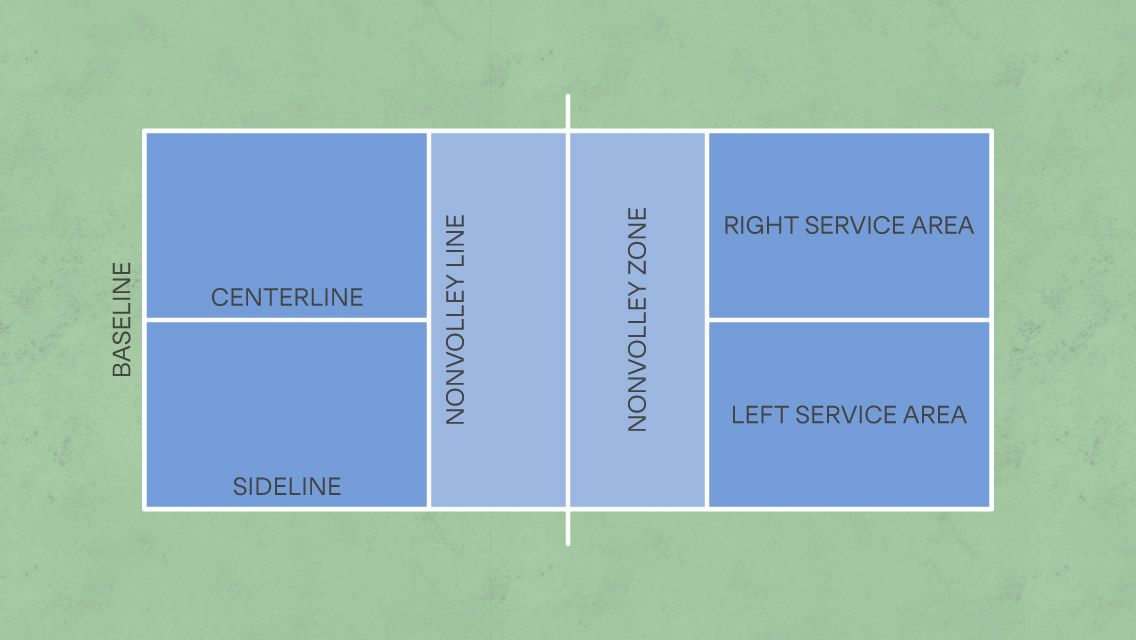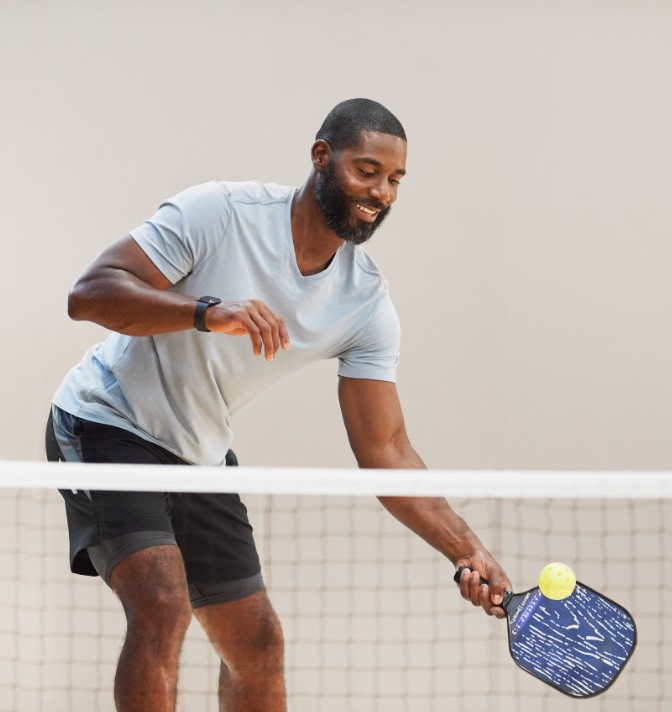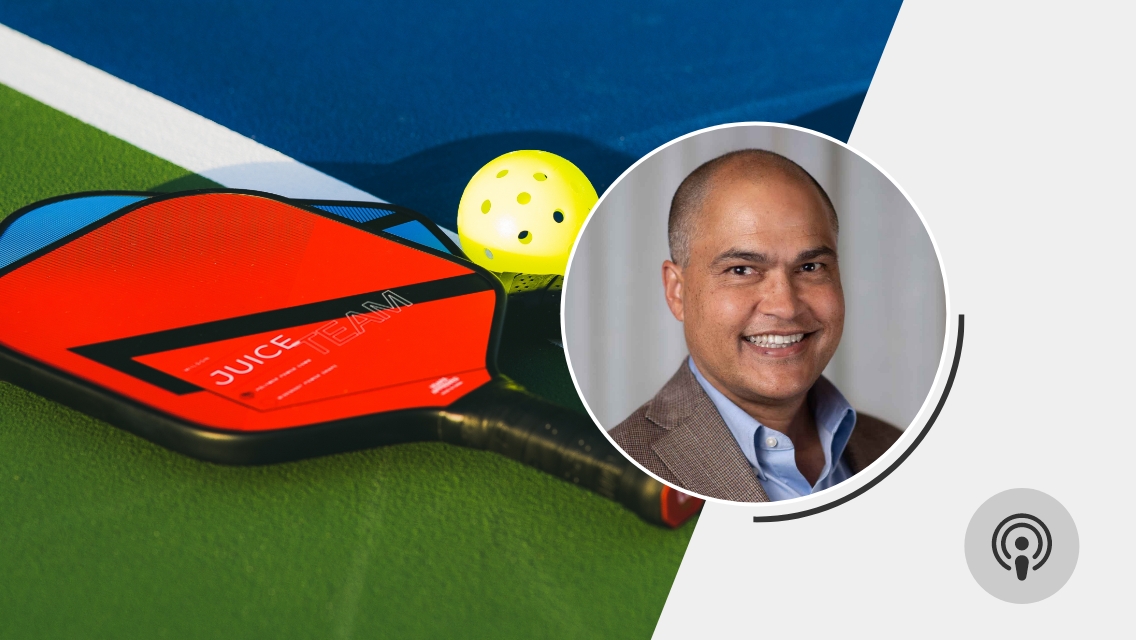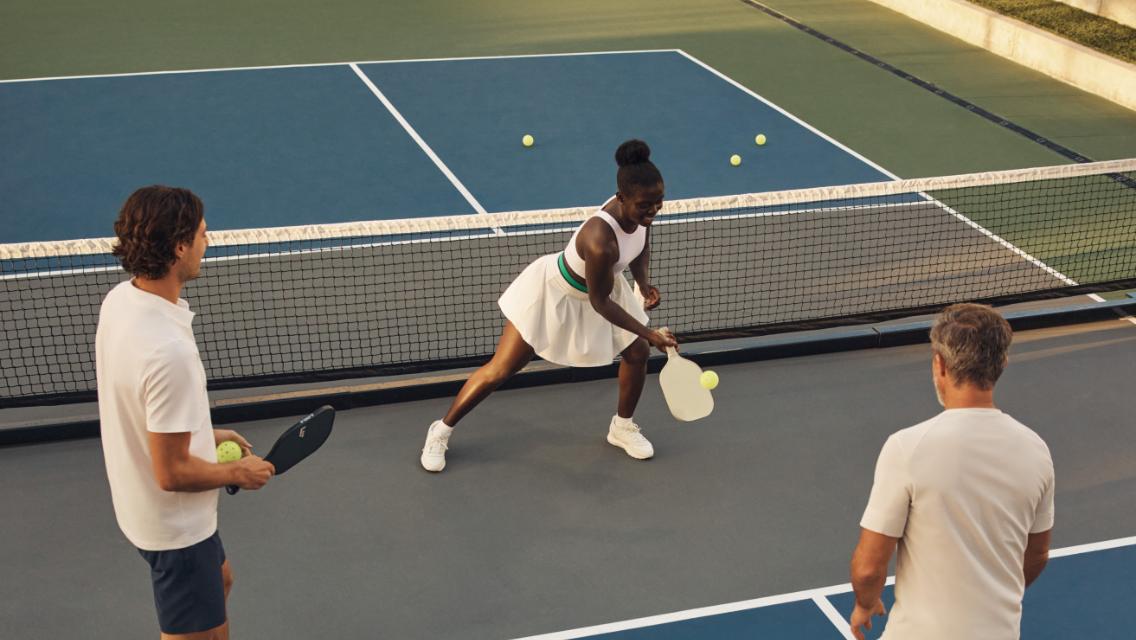Pickleball is a sport that only continues to grow in popularity. With new people picking up paddles every day and others playing multiple times per week, many are wondering, How can I improve my game and take my skills to the next level?
“Most pickleball players have a vision for who they want to be as a player,” says David Dutrieuille, a pickleball pro consultant with Life Time. “Whether you want to play casually or at a 5.5-plus level or somewhere in between, the best way for you to achieve that vision is to practice.”
For all players, there are certain skills that are essential and that can make a difference in your game when they’re practiced consistently. Dutrieuille shares a handful of on-court drills — most of which require a partner — you can focus on for improving your abilities. “It’s no secret that the more you practice, the better you’ll play,” says Dutrieuille.
Note: The below image indicates some of the areas on the court mentioned in the drills.

1. Serving
- Set out a few cones in the middle of the backcourt, spanning from the centerline to the sideline.
- Position yourself crosscourt, in the right-hand court. Serve the ball from behind the baseline, aiming to land the ball past the line of cones in the left service area.
- Serve 50 in a row.
- Switch to the left side, reposition the cones, and serve crosscourt to the right service area, once again aiming for the ball to land behind the cones.
- Serve 50 in a row.
- Increase the challenge by moving the cones to the back quarter of the court. Complete the same steps as above, serving crosscourt from the right then left sides of the court, and serving 50 in a row from each side.
2. Returning
- Set out a few cones in the middle of the backcourt, spanning from the centerline to the sideline.
- Position yourself crosscourt, in the right-hand court.
- Have a partner serve the ball to you from the cones, diagonally crosscourt (it doesn’t matter where the serve goes, so long as it is in-bounds and past the nonvolley line); focus on sending your return to the back half of the court so the ball lands behind the cones.
- Return 50 in a row.
- Move the cones to the back quarter of the court and return 50 more.
3. Blocking
If you’re unfamiliar with blocking, it’s a defensive shot used when dinking at the net and your opponent changes the pace of play by sending a fast ball toward you that may catch you off guard. In that scenario, you’d use a block shot as a way to reset the pace of play and gain control. To perform a block shot you let the ball ricochet off your paddle without much swing.
- Have your partner stand at half-court and send a groundstroke ball (any shot you make after the ball has bounced once) across the net with pace or speed. You can directly face each other or be diagonal.
- As the receiving player, stand just behind the nonvolley zone and aim to block the ball toward a designated area and/or drop it in the opponent’s nonvolley zone.
- Continue volleying back-and-forth until there’s a miss; alternating sending groundstroke balls with your partner.
To make this more challenging: Set up cones to divide the serving player’s playing area into smaller sections, forcing the receiving player who’s blocking to send the ball into a smaller area.
To turn this into a game: Set up cones to divide the serving player’s area in sections. The player sending the groundstroke gains a point if the receiving player who’s blocking the shot doesn’t send the ball into the desired area marked by the cones. If the receiving player sends the ball into desired area, then they get a point. Continue to volleying back and forth against each other; the first person to gain 11 points wins.
4. Put It All Together in a Game Called 7-11
- Start with one player at the nonvolley line, and the other player crosscourt at the baseline on the opposite side of the court.
- The player at the nonvolley line serves the ball to the player at the baseline.
- The receiving player must let the ball bounce once, and then can choose to either drive the ball, lob the ball, or drop the ball. (Dutrieuille encourages challenging yourself to practice the type of shot you want to improve on, rather than hitting the type of shot you’re better at.)
- If the receiving player misses the ball or hits it into the net, the serving player gets a point. If the receiving player successfully returns the ball, then they get a point.
- Continue volleying until the point is over. The same player serves for the duration of this drill before switching.
- This game — which is called “7-11” — is won when either the serving player reaches 11 points or the receiving player reaches 7 points, whichever comes first.
5. Dinking
- Have both partners stand at the nonvolley zone line directly across the net from each other.
- Practice dinking — the soft return hit on a bounce from the nonvolley zone — 25, 50, and then 100 times back and forth.
- Then, have one player move to the other side of the court so the players are now crosscourt.
- Practice dinking 25, 50, and then 100 times back and forth.
- Continue for as many rounds as you’d like.





